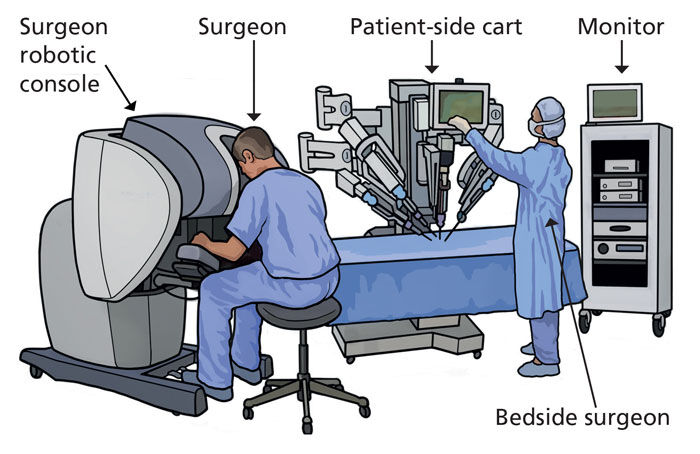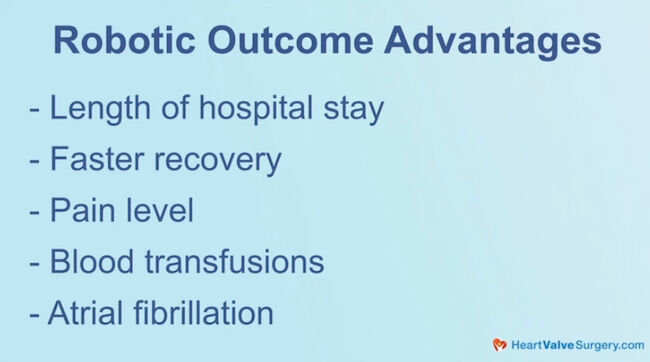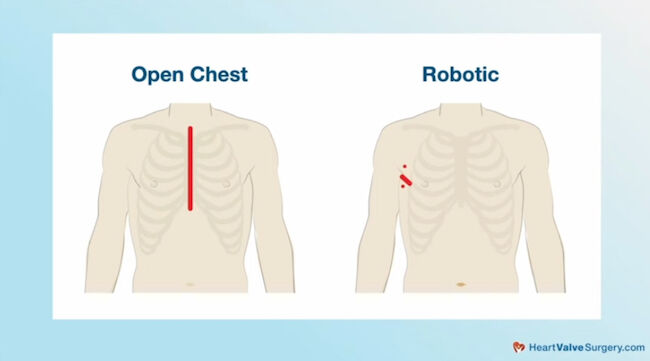Surgeon Q&A: Top 3 Misconceptions of Robotic Mitral Valve Surgery
Written By: Allison DeMajistre, BSN, RN, CCRN
Medical Expert: Arnar Geirsson, MD, Director, Surgical Heart Valve Program, NewYork-Presbyterian Columbia University Irving Medical Center, New York City, New York
Reviewed By: Adam Pick, Patient Advocate, Author & Website Founder
Published: June 24, 2025
Cardiac surgeons have been performing robotic mitral valve surgery for over two decades. It is a minimally invasive surgery for mitral valve disease that provides patients with several advantages including less intraoperative blood loss, reduced post-operative pain, shorter hospital stays, a faster return to normal activities, and better cosmetic outcomes with less scarring compared to traditional open-heart surgery with a sternotomy.
Robotic mitral valve surgery has gained popularity over the years. However, patients have questions and misconceptions about this type of surgery. We spoke to Dr. Arnar Geirsson, Director of the Surgical Heart Valve Program at NewYork-Presbyterian Columbia Irving Medical Center in New York City, New York, to learn the top three misconceptions about mitral valve surgery. Dr. Geirsson has performed over 500 robotic mitral valve operations during his extraordinary career.
Top 3 Misconceptions of Robotic Mitral Valve Surgery
Here are the key insights shared by Dr. Geirsson:
- What is one of the big misconceptions about robotic mitral valve surgery? Dr. Geirsson said, “One of the questions I get asked a lot is, ‘Who is doing the operation?’ or ‘Is the robot doing the operation?’ In reality, I, the surgeon, do the operation. The robot is just a tool to do the operation less invasively.” He explained that the robot is at the bedside, and he sits at a special console and controls the robot. “There’s always an assistant who changes out instruments, but I actually do the operation.”

- What is the second misconception about robotic mitral valve surgery? Dr. Geirsson said that patients often ask if the outcomes of robotic versus sternotomy approaches are the same. “I think the answer is that it’s as safe and as good as a sternotomy.” He explained that the data suggests that robotics provides for a shorter hospital stay, faster recovery, and less pain compared to sternotomy. “Requiring blood transfusions and getting atrial fibrillation after the operation is less frequent with robotics. Other important questions to ask are, ‘What is the quality of the repair and how easy is it to repair the mitral valve?’ The answer is that it seems to be as good or even sometimes more reliable to repair the valve, although it’s difficult to prove. I think all the data and literature suggest that robotic surgery is as safe and effective as sternotomy or other approaches to the mitral valve.”

- What is the third misconception about the robot? “A third common question I get is, ‘Is robotic surgery open-heart surgery?’ And the answer to that is, yes, it is open-heart surgery, but it depends on how you define it. In robotic mitral valve surgery, we use a heart-lung machine, which takes over the function of the heart and lungs. So, in many ways, that qualifies as an open-heart surgery. However, we use small incisions or ports instead of opening the front of the chest. It’s really a minimally invasive cardiac surgery.”

Thanks Dr. Geirsson and NewYork-Presbyterian Columbia University Irving Medical Center!
On behalf of all the patients in our community, thank you, Dr. Arnar Geirsson, for everything you and your team are doing at New York Presbyterian Columbia University Irving Medical Center!
Related links:
- See Dr. Geirsson’s Interactive Surgeon Profile
- Explore the Columbia Heart Valve Center
- Why Robotics? Five Questions with Dr. Arnar Geirsson
Keep on tickin,
Adam
P.S. For the deaf and hard-of-hearing members of our patient community, we have provided a written transcript of our interview with Dr. Geirsson below.
Video Transcript:
Adam Pick: Hi, everybody. It’s Adam with HeartValveSurgery.com, and this is a special surgeon question and answer session all about the top three misconceptions of robotic mitral valve surgery.
I am thrilled to be joined by Dr. Arne Geirsson, who is the director of the Surgical Heart Valve Program at New York Presbyterian Columbia University Irving Medical Center in New York City, New York, During his extraordinary career, Dr. Geirsson has performed over 500 robotic mitral valve operations.
Dr. Geirsson, it is great to see you again, and thanks for being with me today.
Dr. Arnar Geirsson: Thanks, Adam. Thanks for inviting me. It’s a great pleasure to be here.
Adam Pick: Dr. Geirsson, I know you’re in between robotic cases right now at NewYork-Presbyterian. So let’s get right to it. What is one of the big misconceptions about robotic mitral valve surgery?
Dr. Arnar Geirsson: One of the questions I get asked a lot is, “Who is doing the operation?” and “Is the robot doing the operation?” In reality, it’s me, the surgeon who does the operation. The robot is just a tool to do the operation less invasively. There’s a special console that I sit at and control, and then the actual robot is at the bedside.
There’s always an assistant who changes out instruments, but I, the surgeon, actually do the operation.
Adam Pick: Dr Geirsson, what’s the second misconception about robotic mitral valve surgery?
Dr. Arnar Geirsson: Another question people ask about it is, “What are the outcomes? Are the outcomes the same compared to robotic versus sternotomy approaches?”
I think the answer to that is, it appears to be, it is as safe and as good as a sternotomy.
I think there’s a fair amount of data that suggests that, first of all, how long you stay in the hospital, how fast your recovery is, your pain level, requiring blood transfusions and getting atrial fibrillation faster at heart rate after the operation is less frequent with robotics.
The other question is important to ask is “What is the quality of the repair? How easy is to repair the mitral valve?”
It seems to be as good or even sometimes even more reliable to repair the valve, although it’s difficult to really prove that. I think all the data suggests with all the literature that’s out there that robotic surgery is as safe, as effective as sternotomy approaches or other approaches to the mitral valve.
Adam Pick: Dr. Geirsson, it’s great to hear about the outcomes, effectiveness, and safety. What’s another misconception about the robot?
Dr. Arnar Geirsson: A third common question I get is, “Is robotic surgery open heart surgery?”
You know, and the answer to that is strictly speaking, yes, it is an open heart surgery. But, it depends a little bit how you define it. In robotic mitral valve surgery, we use the heart lung machine, which takes over the function of the hearts and the lungs.
So that would, I think in many ways qualifies an open-heart surgery. However, we use small incisions instead of opening up the front of the chest, we use small kind incisions or ports. It’s really minimally-invasive cardiac surgery.
Adam Pick: Dr. Geirsson, thanks for those misconceptions about robotics. I know you have to get back to the operating room, the robotic operating room, and on behalf of patients at HeartValveSurgery.com, patients all over the world, thanks to you and your team there at NewYork-Presbyterian Columbia University Medical Center in New York, New York. Thanks for being with me today. Thanks,
Dr. Arnar Geirsson: Adam. I really appreciate it being offered to come on your site. And, and thanks for all the things you’re doing for patients with heart valve disease. Greatly appreciate it.





